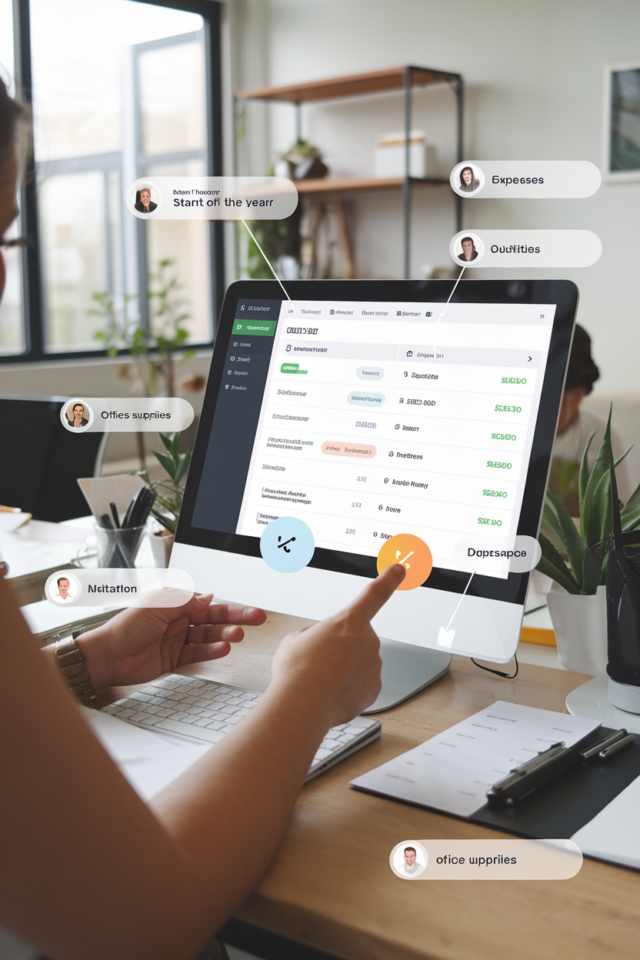Table of Contents
- 1 Why Data Analytics Matters for Your Small Business
- 2 Affordable Tools to Kickstart Your Data Analytics Journey
- 3 Collecting and Analyzing Customer Data: A Step-by-Step Guide
- 4 Making Better Business Decisions with Data
- 5 Overcoming Common Data Analytics Challenges
- 6 Case Study 1: The Handmade Soap Seller
- 7 Case Study 2: The Local Coffee Shop
Why Data Analytics Matters for Your Small Business
First things first, why should you even care about data analytics? Think of data as the heartbeat of your business. It tells you what’s working, what’s not, and where potential opportunities lie. By tapping into data:
- You understand your customers better. What are their buying habits? Which products are they drawn to?
- You make informed decisions. Instead of guessing, you rely on concrete information.
- You stay ahead of the competition. In today’s digital age, businesses leveraging data have a significant edge.
Affordable Tools to Kickstart Your Data Analytics Journey
You might be thinking, “Data analytics sounds expensive!” But here’s the thing—there are plenty of budget-friendly tools out there designed specifically for small businesses.
1. Google Analytics: Your Free Data Goldmine
If you have a website (and in today’s world, who doesn’t?), Google Analytics is a must-have.
- What is it? A free tool that tracks and reports website traffic.
- Why use it? It tells you where your visitors come from, which pages they visit, and how long they stay.
- How to get started? Simply sign up with your Google account, insert a tracking code into your website, and voila!
Think of it as having a customer behavior microscope for your website—without the hefty price tag.
Are you active on platforms like Facebook, Instagram, or Twitter? These platforms offer built-in analytics tools.
- Facebook Insights: Understand your followers, post reach, and engagement levels.
- Instagram Analytics: Dive into follower demographics and see which posts resonate most.
- Twitter Analytics: Track tweet impressions, profile visits, and follower growth.
It’s like having a backstage pass to your audience’s preferences and behaviors.
3. E-commerce Platform Analytics
If you sell products online, platforms like Shopify, WooCommerce, or Etsy come equipped with their own analytics dashboards.
- Sales Reports: Track your top-selling products, average order value, and sales over time.
- Customer Insights: See who your customers are and their purchasing habits.
- Inventory Management: Monitor stock levels and product performance.
Consider it your business’s health report, available at a glance.
4. Affordable Third-Party Tools
There are also budget-friendly tools designed for small businesses:
- Mailchimp: Not just for email marketing; it offers audience insights and campaign analytics.
- Hotjar: Provides heatmaps to see where users click and scroll on your website.
- Zoho Analytics: An affordable platform offering data visualization and reporting.
Collecting and Analyzing Customer Data: A Step-by-Step Guide
Now that we’ve covered the tools, let’s dive into how you can effectively collect and analyze data.
Step 1: Set Clear Objectives
Ask yourself:
- What do I want to learn from my data?
- Am I looking to increase sales, improve customer retention, or launch a new product?
Without a destination in mind, any road will get you there—or nowhere.
Step 2: Gather Data Consistently
Consistency is key.
- Website Data: Regularly check Google Analytics.
- Sales Data: Monitor your e-commerce platform’s analytics weekly.
- Customer Feedback: Use surveys or feedback forms to gather insights directly from customers.
Step 3: Analyze and Interpret
Look for patterns and trends.
- Are certain products selling more during specific times?
- Which marketing campaigns resulted in the highest engagement?
Think of yourself as a detective, piecing together clues to form a bigger picture.
Step 4: Implement Insights
Data is only as good as how you use it.
- If a product isn’t selling well, consider promotions or discontinuation.
- High cart abandonment rates? Maybe the checkout process needs simplification.
Step 5: Review and Adjust
Business environments change, and so should your strategies.
- Regularly revisit your data.
- Adjust your objectives and tactics based on new insights.
Making Better Business Decisions with Data
Data isn’t just numbers on a screen; it’s a narrative about your business.
- Enhance Customer Experience: Use data to personalize offerings. If most of your customers are millennials, tailor your marketing to their preferences.
- Optimize Marketing Efforts: Allocate resources to channels yielding the highest ROI.
- Forecast Trends: Anticipate market shifts and adjust inventory or services accordingly.
Imagine being able to predict customer needs before they even realize them—that’s the power of data.
Overcoming Common Data Analytics Challenges
Even with the best tools, you might face hurdles.
Feeling Overwhelmed by Data Volume
- Solution: Focus on key metrics that align with your objectives. Quality over quantity.
Lack of Technical Expertise
- Solution: Utilize user-friendly tools with intuitive interfaces. Many platforms offer tutorials and support. Or Hire a professional.
Data Security Concerns
- Solution: Ensure you’re compliant with data protection regulations. Use trusted platforms and regularly update security protocols.
Affordable Data Analytics: Case Studies
Sometimes, real-life examples make all the difference.
Case Study 1: The Handmade Soap Seller
Jane runs a small online store selling handmade soaps. By using Google Analytics, she discovered that most of her traffic came from blog posts about natural skincare. She started producing more content in this niche and saw a 40% increase in sales over three months.
Lesson Learned: Understanding where your traffic comes from can help you capitalize on what’s already working.
Case Study 2: The Local Coffee Shop
Mike owns a local coffee shop and uses social media insights from Instagram. He noticed that posts featuring latte art received the most engagement. He started hosting latte art workshops and promoted them online, resulting in increased foot traffic and sales.
Lesson Learned: Social media analytics can guide you in creating offerings that resonate with your audience.
Tips to Maximize the Benefits of Data Analytics
- Stay Curious: Always ask questions about your data. Why did sales spike last month?
- Educate Yourself: There are countless free resources and courses online about data analytics basics.
- Join Communities: Engage in forums or groups where you can learn from other small business owners.
Wrapping It Up: Your Roadmap to Data-Driven Success
Embarking on the data analytics journey might seem daunting at first, but remember, every big accomplishment starts with a single step. By leveraging affordable tools and staying committed, you’ll gain insights that can propel your business to new heights.
So, are you ready to turn data into your business’s secret weapon?
After all, in the world of business, knowledge isn’t just power—it’s profit.
Additional Resources
- Free Online Courses: Platforms like Coursera and Udemy offer courses on data analytics basics.
- Blogs and Podcasts: Stay updated with the latest trends by following industry experts.
- Networking Events: Attend local business meetups or webinars to learn and share experiences.
Remember, data analytics isn’t just for the big players. With the right approach, even the smallest businesses can harness its power to drive growth and success. It’s not about having a massive budget; it’s about being smart with the resources you have.







